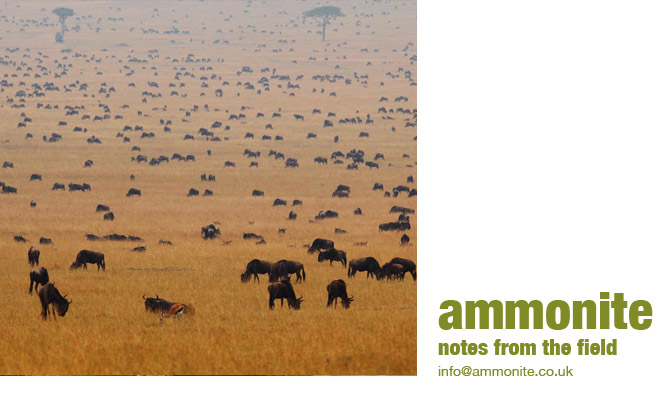This is a repost from earlier this year but now we have this Youtube clip from Ammonite's latest film Hunt For The Giant Squid it seems like a good idea to remind you of that magical filming expedition.
We are in Belize filming bioluminescent marine creatures. The bit of Belize where we are doing this is an hour’s bumpy ride on a boat from Dangriga to South Water Caye, an island which measures about the size of a cruise ship. The lodge where we are staying and working is also a marine biology study centre. Professor Jim Morin is working with us and has set up a laboratory there so we can film the work that he is doing with bioluminescent animals.
One especially astonishing creature that he is studying is a bioluminescent Ostracod, an animal the size of a sesame seed which has the capacity to set itself ablaze in blue light in order to attract a girlfriend.
Every night after a full moon an extraordinary spectacle takes place; one night Jim took us to the marine mating grounds where we waited in the boat until sunset, then we slipped into the water and waited for the light show.
The beautiful prelude to ostracod action is the dance of the female marine worms who rise to the water’s surface spraying out their eggs in a mass of green light attracting hundreds of males who rush over to fertilise them, the water fizzes with action, it's like watching hundreds of tiny catherine wheels going off all over the water.
Ten minutes after the worms have got going, the ostracods start swimming upwards, slowly at first, we just see the odd line of vertical lights coming up among the corals and seaweeds, moving gently in the current. Each male ostracod gives off four dots to signal their presence to any females who might be around, then the lights become more and more until the water is pulsating with wavy lines of vertical blue dots all moving upwards.
Just when the water seems already full of light, the horizontal swimmers start, their trails of blue light spots fan out laterally, soon the ocean becomes an intense trippy matrix, it's mesmerising. Finally the lights fade away and we come up out of the water to make our way home, the night sky is indigo and massed with stars, we sit quietly in the boat on the way home because we can’t quite believe what we saw.
If you click on the Facebook button on the right you'll find an album of photos from Belize.
-












































